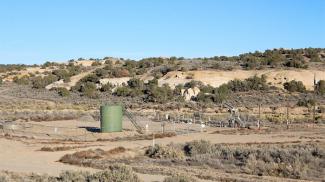Broad national estimates of methane emissions obscure the ability to identify significant sources of methane at the regional level and the ability to target methane reduction opportunities effectively. An NETL-led study of natural gas liquids unloading provides a clear example of the importance of methane quantification research to improve the performance of the U.S. natural gas industry. The study highlights the need to consider variability in episodic emission sources and regional differences in developing robust methane emissions estimates.
Methane is the primary component in natural gas, which provides abundant and affordable power for U.S. homes, businesses and more. However, methane within the atmosphere also contributes to the greenhouse effect. The Lab’s work to identify methane emissions sources and improve emissions estimates aids efforts by NETL and other research facilities to develop clean technologies that reduce methane emissions to ensure the public’s health, safety and security.
Liquids unloading is an essential step in natural gas operations. Fluids often build up within a well during production for a variety of reasons. As this occurs, the accumulated liquids must be released periodically to avoid inhibiting gas flow and maintain production. However, these unloading activities release methane into the atmosphere.
Estimates of methane emissions often show discrepancies between “bottom-up” methods, which use measurements taken at natural gas production facilities, and “top-down” approaches, which involve taking atmospheric measurements via airplane flyovers. NETL’s study investigated how episodic events, such as natural gas liquids unloading, and the associated technologies contribute to methane emissions estimates by region.
NETL researchers focused on the 18 most productive U.S. natural gas basins and examined different ways in which wells are unloaded. In some instances, wells are unloaded manually, without special equipment. In other instances, plunger lifts are used to used lift accumulated fluid from the well; some plungers are manually engaged, while others are automatically controlled. The frequency and duration of unloading events also affect total unloading emissions.
The NETL team developed a detailed model with multiple parameters that affect the scale of emissions from liquids unloading operations. These parameters are highly variable, both within and across natural gas production basins. Statistical distributions were assigned to account for this variability, and then liquids unloading was simulated in a model with thousands of iterations.
The results indicated that methane emissions from liquids unloading varied considerably within and across basins, with average methane emissions rates highest in the San Juan basin — which spans portions of New Mexico, Colorado, Utah and Arizona — and the broader Rocky Mountain region.
Further, a small portion of natural gas wells with high unloading frequencies were found to constitute a disproportionately large fraction of total emissions. These infrequent but high-emitting activities are referred to as “super-emitters.” This work showed that super-emitter characteristics arose organically from the probabilistic model. This confirms the statistical modeling used by NETL aligns with field observations of super-emitters.
The study demonstrated that reporting programs potentially understate methane emissions from natural gas liquids unloading. The results highlight the importance of considering variability, regional differences, and well-specific technologies when developing estimates of methane emissions from episodic sources.
A research paper on the NETL study is featured in the latest edition of Environmental Science and Technology (ES&T), a biweekly peer-reviewed journal that shares significant and original research accomplishments across a broad range of environmental disciplines. The study was authored by NETL’s George G. Zaimes, James Littlefield, Daniel Augustine, Gregory Cooney and Timothy J. Skone with collaborators at Cheniere Energy, AECOM and the Environmental Defense Fund. To access the ES&T paper, click here.




